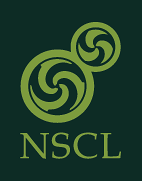NSCL users make discovery that challenges nuclear theory
Researchers test the way we understand forces in the universe
A team of researchers, including scientists from the Facility for Rare Isotope Beams (FRIB) and the National Superconducting Cyclotron Laboratory (NSCL) at Michigan State University (MSU), have made a discovery that could change how scientists understand fundamental forces acting inside atomic nuclei.
The breakthrough revealed that the mirror (or isospin) symmetry that explains the similarity between protons and neutrons that is thought to exist within the core of atoms is not as fundamental as previously believed. The discovery sheds light on the forces at work within the atomic nucleus, opening the door to a greater understanding of the universe. The findings were published 1 April in the scientific journal Nature.
The University of Massachusetts (UMass) Lowell-led team made the discovery while working to determine how atomic nuclei are created in X-ray bursts. These explosive bursts happen on the surface of neutron stars, which are the remnants of massive stars at the end of their life.
“This work generates many new questions about the breakdown of mirror symmetry and its origins,” said Andrew Rogers, UMass Lowell assistant professor of physics, who led the research team. “It is always a pleasure working with the outstanding scientists and dedicated staff at NSCL. I am excited for the next-generation laboratory, the Facility for Rare Isotope Beams, which can provide the exotic beams we need for future experiments on mirror symmetry.”
The experiment used the unique features of NSCL to make rare isotopes like short-lived strontium-73 for study. In addition, NSCL scientists provided the detection systems for the charged particles and photons (fundamental quanta of light). They also aided in the design, setup, and execution of the experiment.
NSCL team members were Sean Liddick, associate director for NSCL’s experimental science department; Katherine Childers, graduate research assistant; Hendrik Schatz, director of the Joint Institute for Nuclear Astrophysics - Center for the Evolution of the Elements; and former NSCL graduate students Rebecca Lewis and Alexander Dombos. State-of-the-art theoretical calculations supporting the experimental work were carried out by Simin Wang, a research associate at NSCL, and Witek Nazarewicz, FRIB chief scientist.
The researchers’ work “offers unique insights into the structure of rare isotopes,” Nazarewicz said. “But much still remains to be done. New facilities coming online, such as FRIB at MSU, will provide missing clues into a deeper understanding of the mirror symmetry puzzle. I am glad that the exotic beams delivered by our facility, unique instrumentation and theoretical calculations could contribute to this magnificent work.”
The U.S. Department of Energy Office of Science supported the research with a $1.2 million grant to UMass Lowell.
Plans for more experiments are already underway. The researchers seek to refine and confirm their observations and study these isotopes further.
For more information about the experiment, see the UMass Lowell release.

A team of researchers, including scientists from the Facility for Rare Isotope Beams and the National Superconducting Cyclotron Laboratory at Michigan State University, have made a discovery that could change how scientists understand fundamental forces acting inside atomic nuclei.



